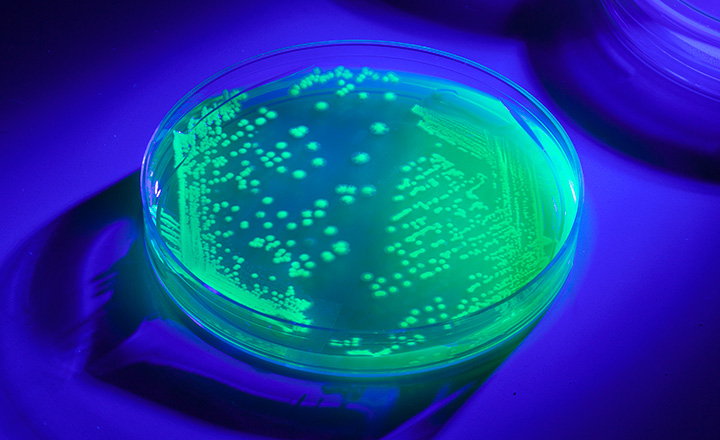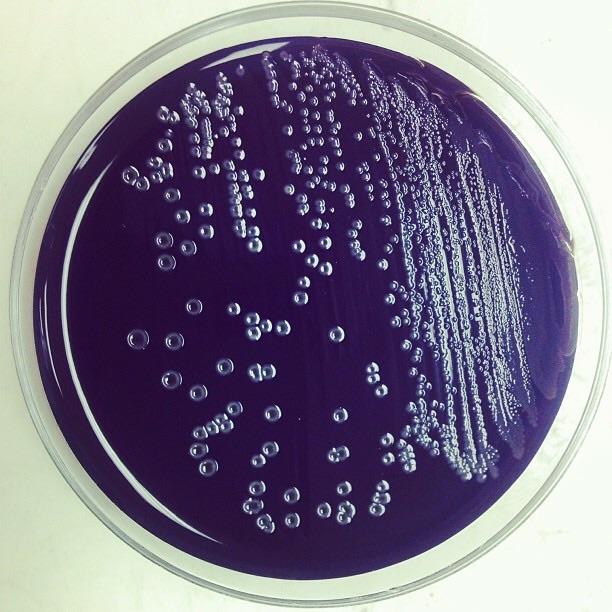Listeria species are a group of bacteria that belong to the genus Listeria. There are several species within this genus. This article discusses these species in depth.
Occurrence
Members of the genus Listeria are ubiquitous [44]. They can be found on decaying vegetation and in soils, animal feces, sewage, silage, raw milk, soft cheeses, fresh and frozen meat, vegetables, poultry, seafood, as well as from environmental samples taken from especially water and food processing plants.
Food safety knowledge is for all!

Every consumer deserves to have high quality and safe food. …Read more!

Species identified
The genus Listeria is currently comprised of 17 species [45, 46]. Based on their similarities to Listeria monocytogenes, the Listeria species are classified into Listeria sensu strict and Listeria sensu lato group.
Listeria sensu strictu
- Listeria monocytogenes,
- Listeria seeligeri,
- Listeria marthii,
- Listeria ivanovii,
- Listeria welshimeri,
- Listeria innocua,
Characteristics of Listeria sensu strictu
- Non-spore-forming,
- Rod-shaped.
- Gram-positive
- Facultative anaerobic
- Non-capsulated,
- Flagellar motility
- Voges-Proskauer reaction positive and hence able to produce acetoin from fermentation of glucose through the butanediol pathway
- Ability to grow at temperatures as low as 4 °C,
- Positive catalase reaction,
- Negative oxidase test – The oxidasetest is used to identify bacteria that produce cytochrome c oxidase, an enzyme of the bacterial electron transport chain.
- Inability to reduce nitrate to nitrite,
- All sensu strictu species are capable of fermenting D-arabitol, α-methyl D-glucoside, cellobiose, D-fructose, D-mannose, N-acetylglucosamine, maltose, and lactose
- None of the species can ferment inositol, L-arabinose, and D-mannitol [46]
Listeria sensu lato group
They include:
- Listeria grayi,
- Listeria fleischmannii,
- Listeria floridensis,
- Listeria aquatica,
- Listeria newyorkensis,
- Listeria cornellensis,
- Listeria rocourtiae,
- Listeria weihenstephanensis,
- Listeria grandensis,
- Listeria riparia, and
- Listeria booria

Characteristics of Listeria sensu lato group
- Gram-positive bacterium
- Non-motile (except for Listeria grayi),
- Able to reduce nitrate (except for Listeria floridensis),
- Are negative for the Voges-Proskauer test (except for Listeria Grayi)
- Unlike all other Listeria species, species in the proposed new genus MesoListeria are not able to grow below 7 °C [46].
- Only Listeria Grayi and one out of two Listeria Aquatica strains analyzed show Voges-Proskauer reaction positive, among sensu lato species,
- All sensu lato species but Listeria Floridensis can reduce nitrate
Serotypes
In addition to the 17 species, various serovars have been identified. For example, in the Listeria sensu strictugroup, Listeria are characterized by the possession of antigens that give rise to 17 serovars. Listeria monocytogenes, is represented by 13 serovars. Some are shared by Listeria Seeligeri and Listeria Innocua. The commonly isolated serotypes are types 1 and 4 [44].
Growth characteristics and toxin production
Researchers have reported the growth characteristics of Listeria to be as follows:
| Characteristics | Characteristics | |
| Temperature | 1 – 45°C | -1.5 – 45°C (Optimum 30–37°C) |
| pH | 4.1 – 9.6 (Optimum – 6-8) | 4.0–9.6 (Optimum 6.0–8.0) |
| Water activity | 0.90 – 0.93 | 0.90; Optimal 0.97 |
| References | [44] | [47] |
Listeria monocytogenes is tolerant tosalt and can grow in 13–14% sodium chloride [47].
Listeria monocytogenes can grow under both aerobic and anaerobic conditions, although it grows better in an anaerobic environment [47].
The nutritional requirements are similar to those for many other gram-positive bacteria. At least four B vitamins are required for Listeria monocytogenes:
- Biotin,
- Thiamine,
- Riboflavin, and
- Thioctic acid
The amino acids glutamine, cysteine, leucine, isoleucine, and valine are important. Iron is important in in vivo growth for Listeria monocytogenes [44].

Detection of Listeria
Conventional testing methods for the detection of Listeria monocytogenes in food involve growth in pre-enrichment medium, followed by growth on selective medium and a couple of confirmatory biochemical and serological tests. Molecular methods such as real-time -PCR, are also used for accurate identification and a precise quantification of nucleic acid sequences.
Pathogenicity
Pathogenic species
Two species are considered pathogenic to humans [46]:
- Listeria monocytogenes
- Listeria Ivanovii,
Listeria monocytogenes causes listeriosis [45, 48].Although the listerosis incidence is low, very high fatalities ranging from 20 to 30% are usually reported in case of outbreaks.
Symptoms
Typical symptoms[46, 49] include:
- Septicemia
- Abortions
- Encephalitis
- Gastrointestinal illnesses without systemic infections
Groups at risk include
- Pregnant women
- Neonates
- Immunocompromised patients
- The elderly
1.6.3 Virulence properties
Virulence is multifactorial. Many factors affect the pathogenicity of Listeria monocytogenes. They include:
- Listeria monocytogenes is ingested, may survive the stomach environment and enter the intestine where it penetrates the intestinal epithelial cells.
- Its capacity for intracellular growth – can cause parasite-directed endocytosis
- Superoxide dismutase – The presence of bacterial superoxide dismutase offers a defense against this toxic molecule and hence is a possible virulence factor of the organism.
- The most significant virulence factor associated with Listeria monocytogenes is listeriolysin O [44, 47].
- The virulence factors, including internalin, listeriolysin O, phospholipases and a bacterial surface protein, actA, are encoded by chromosomal genes organized in operons [50].
Infectious dose
The approximate infective dose of Listeria monocytogenes is estimated to be 10 – 100 million colony forming units (CFU) in healthy hosts, and only 0.1 to 10 million CFU among the individuals at high risk of infection [51].
Control
Overall, standard pasteurization protocols for milk are adequate for destroying Listeria monocytogenes at levels of 105-106/ml, whether freely suspended or in intracellular state [44].
Temperatures above 50°C are lethal to Listeria monocytogenes. Freezing can also lead to a reduction in Listeria monocytogenes numbers [47].
Our Blog ↗
Read the latest from our blog
Ask a Question ↗
Ask a question and get answers from our community
Give Feedback ↗
We value your feedback.


